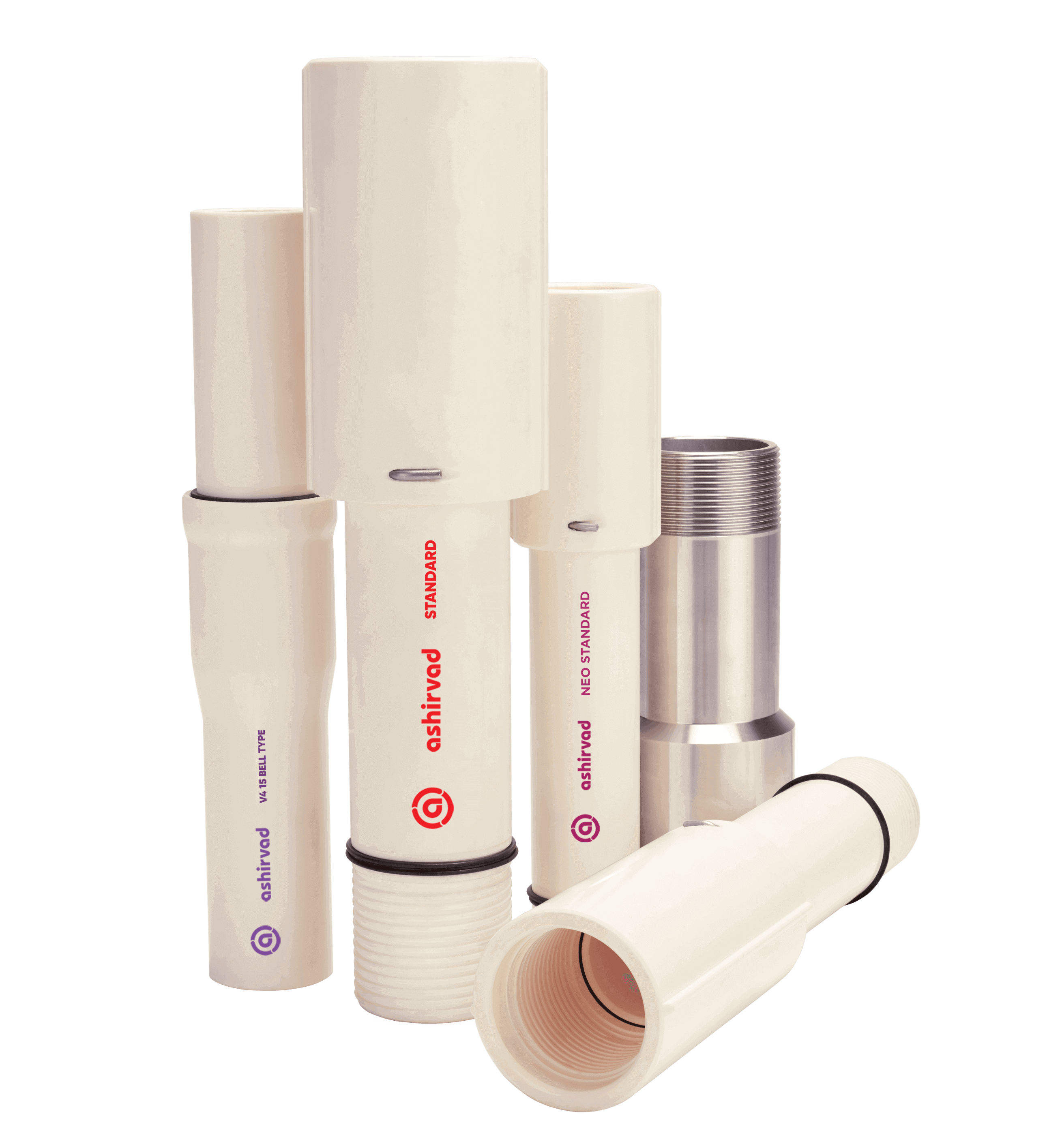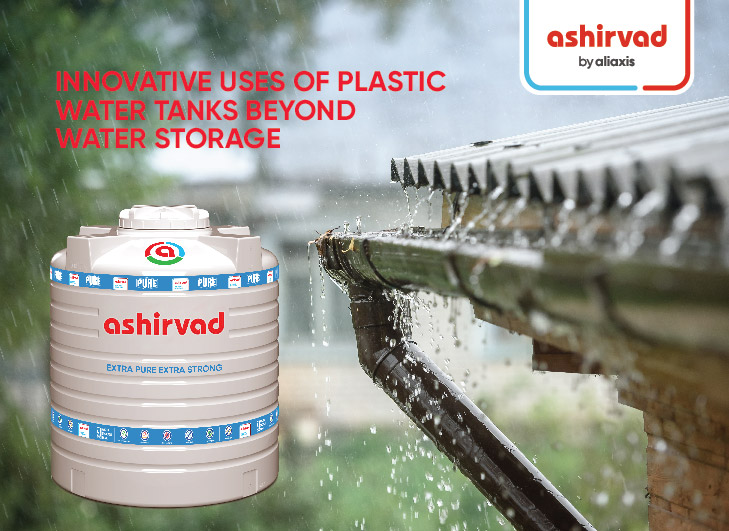Reading Time: 5 minutes
Do you picture your ideal day starting with a satisfying soak in a powerful shower, uninterrupted by sputtering water pressure? Or perhaps you envision lush, vibrant gardens bursting with life, nourished by a dependable source of water. Whether you’re a seasoned gardener or a city dweller yearning for a touch of green, one thing’s certain, a reliable water tank can be your trusty companion in achieving these dreams. Choosing the right water tank, therefore, is crucial, considering the diverse options catering to specific needs. If you’re considering purchasing one, this guide ensures you make an informed decision.
Water tank types based on location
When it comes to water tanks, one size or type doesn’t fit all. The ideal choice often depends on where you plan to install it. From rooftop perches to hidden depths let us discover the best water tank placement for your needs
Above-ground tank: These tanks are ideal for urban areas where space is limited. They are easy to install, accessible for maintenance, and usually more cost-effective. They have limited capacity compared to some below-ground options. It is because above-ground tanks are limited by available surface area and height restrictions. The below-ground tanks, on the other hand, can utilize larger volumes beneath existing ground level, expanding their capacity potential.
Underground tank: The tanks that are best suited for properties with ample space and those wanting a discreet solution are underground tanks. The advantage of these water tanks is that they are space-saving, protected from weather conditions, and often have larger capacities available. Unlike their above-ground counterparts, limited by space and materials, underground tanks tap into the vast potential of the earth itself. Freed from restrictions, they can be sculpted into expansive chambers, their walls bolstered by the surrounding soil. This translates to impressive capacities, able to quench the thirst of sprawling estates, thirsty gardens, or even entire communities.
Overhead water tanks: Overhead water tanks are ideal for buildings with available rooftop space. The advantages of these tanks are that they are a gravity-fed system, are aesthetically pleasing, and utilize vertical space.
Water tank types based on material
Polyethylene tanks: If you want a tough and versatile tank then polyethylene tank is for you. These tanks are moulded from Polyethylene, making them rugged enough to withstand the heat, air, and water. These tanks won’t crack under pressure, from blazing summers to bone-chilling winters. Need a tank for rainwater harvesting? Polyethylene tanks are available in various sizes and shapes allowing you to optimize your rainwater harvesting system based on your roof size and water requirements. Ashirvad polyethylene tanks come in capacities of 500, 700, 1000, 1500, and 2000 Liters which is well-suited for rainwater harvesting as well as storage.
Steel tanks: Steel tanks stand tall for those who like their water storage solutions robust and unyielding. Crafted from galvanized or stainless steel, these tanks are the titans of durability. Steel tanks resist corrosion and stand strong against the test of time, perfect for industrial settings or where a heavy-duty solution is required. Whether potable water or industrial liquids, steel tanks deliver with an unmatched strength built to last.
Concrete tanks: When you think of reliability, think concrete. Concrete water storage tanks are the silent guardians of stability, providing a solid foundation for your liquid assets. Buried beneath the surface or standing proudly above ground, these tanks offer excellent resistance to fire and extreme weather conditions. If longevity and resilience are non-negotiables for you, a concrete tank might be the anchor your water storage plan needs.
Fiberglass tanks: In water storage tanks, fiberglass tanks are the lightweight contenders that pack a punch. Constructed from layers of fiberglass-reinforced plastic, these tanks are not only durable but also corrosion-resistant. The best part? They are significantly lighter than their steel or concrete counterparts, making installation easy. Fiberglass might be the answer if you’re looking for a tank that’s easy on the eyes and even easier to handle.
Rain Barrels: For the environmentally conscious water warrior, rain barrels take the stage. These compact and often colourful containers capture rainwater from your rooftop, turning a natural resource into a sustainable water solution. Ideal for garden watering or flushing toilets, rain barrels add a touch of eco-friendliness to your water storage strategy. They make water conservation look good – one droplet at a time.
Water tank application
Water tanks aren’t just vessels for storing water; they are versatile solutions with multiple applications across various domains. Let’s explore the diverse roles that water tanks play in different settings:
- Residential water storage: Water tanks ensure a consistent water supply for daily household needs. It mitigates water shortages, especially in areas with irregular water supply.
- Agricultural irrigation: The water tanks also are used in agricultural irrigation, providing a reliable water source for crops and livestock. They support sustainable farming practices and help increase agricultural productivity.
- Fire protection: Water is needed for firefighting efforts and water tanks fulfil this need. In this way, they enhance community safety by providing a readily available water source for firefighting.
- Rainwater harvesting: They collect rainwater for various uses. It promotes sustainability and reduces dependence on traditional water sources.
- Construction projects: Water tanks are temporary storage for construction sites. It enables efficient construction processes by ensuring a readily available water supply for various needs.
- Industrial processes: Water tanks support manufacturing and industrial activities requiring water. It Ensures a consistent and reliable water source for industrial processes.
- Commercial buildings: They provide water for various commercial applications, such as, the water needs of businesses, hotels, and other commercial establishments.
- Recreational areas: The water tanks supply water for parks, golf courses, and recreational facilities.
- Remote and off-grid areas: Water tanks address water scarcity in remote or off-grid locations.
The benefit is that they provide a sustainable water source for communities without access to centralized water systems. - Emergency water supply: Water tanks act as a reserve during emergencies or natural disasters.
Conclusion
There are various types of water storage, and what suits you depends on your unique needs. So, as you embark on your quest for the ideal water storage tank, remember that it’s not just about storing water – it’s about securing a lifeline that keeps the flow going, no matter what.
Whether you’re considering a polyethylene tank for its durability and versatility, a steel tank for its strength and longevity, or a concrete tank for its durability and stability, each type offers unique benefits to suit different needs and preferences.
By weighing factors such as material, size, and intended use, you can select the ideal water tank that meets your requirements and ensures reliable water storage for your home, business, or agricultural needs. With this comprehensive knowledge of water tank types, you can invest in a tank that provides long- lasting value and peace of mind.
FAQs: Water tank types
Q.1 Which type of water tank is best?
Answer: Though each tank comes with its advantages, a tank that ensures toughness and versatility is best. Ashirvad water tank provides both because it is constructed from triple/four-layer polymer that protect the tank body from UV rays and ensure a longer life. So, it is the best water tank.
From the material standpoint the best water tank is polyethylene tank. From location standpoint whether you should choose an above ground, overhead, or underground water tank depends on your needs and available space. Ashirvad polyethylene water tank is both tough and versatile and is the best choice if you are looking for an overhead tank for your home.
Q.2 Which tank is best for your home?
Answer: As discussed above, different water tanks come with different advantages. However, when it comes to material, Polyethylene (poly) is the best
Q.3 What is the most common tank?
Answer: Plastic tanks, particularly those made of Polyethylene, are the most common for their versatility, affordability, and ease of installation.































